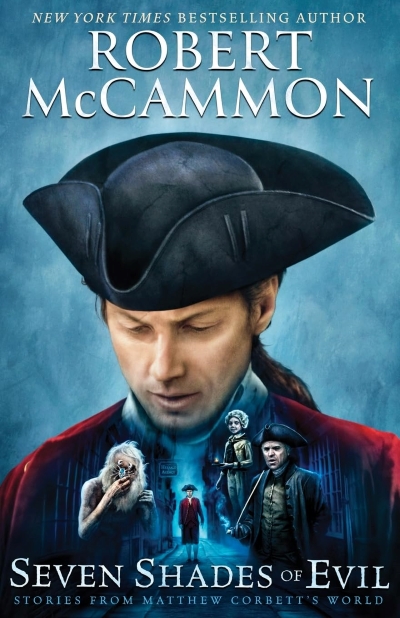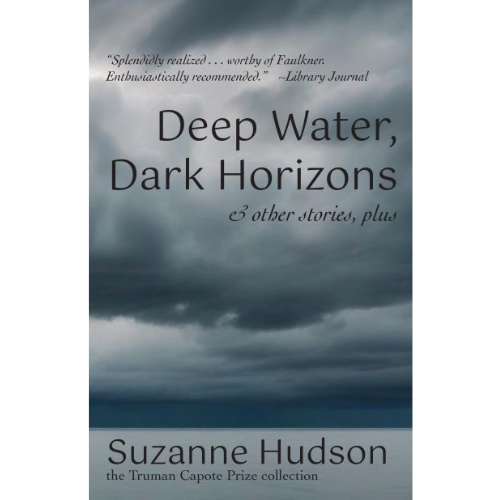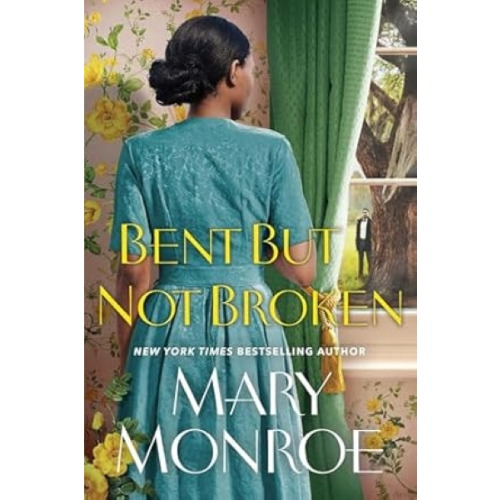Seven Shades of Evil: Stories from Matthew Corbett’s World
Lividian Publications, 2023
Hardcover: $39.50; Paperback: $24.99; eBook: $11.49
Genre: Historical Fiction; Mystery/Thriller; Short Stories
Reviewed by Edward Journey
 Legions of Robert McCammon fans have followed his “Matthew Corbett” historical suspense series for more than two decades. The tenth and final installment, Leviathan, is due out this fall. In the meantime, Seven Shades of Evil: Stories from Matthew Corbett’s World is a collection of eight stories featuring both Corbett and other characters from the series, set in the years 1702 to 1704. Robert McCammon is the Birmingham-based New York Times best-selling author of dozens of books, including Swan Song, The Wolf’s Hour, Boy’s Life, and The Five. The Matthew Corbett series has been called “The Early American James Bond.” McCammon, the winner of numerous awards for fantasy, horror, and suspense, will be inducted into the Alabama Writers Hall of Fame in 2025.
Legions of Robert McCammon fans have followed his “Matthew Corbett” historical suspense series for more than two decades. The tenth and final installment, Leviathan, is due out this fall. In the meantime, Seven Shades of Evil: Stories from Matthew Corbett’s World is a collection of eight stories featuring both Corbett and other characters from the series, set in the years 1702 to 1704. Robert McCammon is the Birmingham-based New York Times best-selling author of dozens of books, including Swan Song, The Wolf’s Hour, Boy’s Life, and The Five. The Matthew Corbett series has been called “The Early American James Bond.” McCammon, the winner of numerous awards for fantasy, horror, and suspense, will be inducted into the Alabama Writers Hall of Fame in 2025.
The first story in the Seven Shades of Evil collection, “The Four Lamplighters,” finds Matthew Corbett and his fellow “problem-solver,” mentor/colleague Hudson Greathouse, becoming bodyguards for the titular quartet, a group of English singers with strange periwigs singing effete bawdy songs for highly titillated women. An angry cuckold, hired killers, and a missing wife complicate a story with amusing contemporary references.
In “Night Ride,” Corbett embarks on a trek on a “cursed road” to deliver a message to a client’s brother who “only [goes] about at night.” Once the reader commits to enter the worlds McCammon creates, there is an irresistible urge to move forward. “The House at the Edge of the World” finds Greathouse searching for a “monster” that terrorizes a town in New York. This “edge of the world” is about fifty miles west of New York City and highlights McCammon’s ability to capture the wildness and mystery of the American colonies.
“The Scorpion’s Eye” features Minx Cutter, the “princess of blades,” who is employed by the Herrald Agency, where Corbett and Greathouse also work as problem-solvers. “Danger,” of course, is “her drug.” Her mission is to find a “fabulous piece of jewelry” that was stolen and is allegedly a curse to its beholder. In alliance with a band of thieves, Cutter seeks to retrieve the scorpion brooch from an estate protected by a vicious roaming tiger. The story features a terrifying premise that seems too easily resolved. The story “Skeleton Crew” finds Katherine Herrald, owner of the Herrald Agency, protecting a formerly enslaved woman from a land baron and masked riders trying to force her off her land. As the story develops, so much depends on a game of Jingo played in a barn beneath the lanterns’ glow.
“The Pale Pipesmoker” features both Katherine Herrald and Minx Cutter as they investigate a client’s request to help her turn away a regular customer at her tavern. She worries that his alarming appearance – like a “walking tomb” – might repel the other patrons. The quest leads to the trail of a serial killer, “Billy Shears,” whose name may be one of several playful references to the Beatles in the Seven Shades collection (see “The Four Lamplighters”). “The Pale Pipesmoker” is one of the McCammon stories that leaves a hint that we have not read the last of a certain character.
“Wandering Mary” is a novella-length story and one of the most satisfying of the mysteries. A wealthy eccentric, Forbes Truxton, is being beckoned by the ghost of his late wife, who invites him to join her in the afterlife. The family invites Matthew Corbett to come to the family’s gloomy cliffside mansion to witness Forbes’s insanity. Corbett is skeptical, although ghosts are a regular occurrence in these stories, with the New York offices of the Herrald Agency actively haunted by noisy poltergeists.
McCammon describes the story “Incident on the Lady Barbara” as the “eighth tale in our journey of seven.” Berry Grigsby, Matthew Corbett’s love interest, is being harassed by an insufferable fellow passenger, Reginald “Rowdy Reggie” Goolbie, on an ocean voyage from England to New York. Happenings on the voyage require Berry, who is not in the “problem-solver” business, to become a sleuth on her own to get to the bottom of mysterious events on the ship.
Jessica Rinehart, a young passenger on the Lady Barbara in 1704, intrigues Berry with her ambition to become a writer of mystery novels – something that would have been unheard of at the time. “I think in the future much praise should go to the mystery writer,” Jessica explains, “for lighting the candles of imagination and intrigue in a world that can sometimes seem so dreadfully dark.” There is a sense that the early-eighteenth-century woman speaks for McCammon there.
Indeed, his pleasure in the writing of these stories is often palpable, and we can appreciate the playfulness that works its way into the texts without disturbing the build-up of tension and emotion. I even caught a reference to a “dark and stormy night.” McCammon uses passages of purple prose at times that are amusingly chosen and appropriate to genre and period placement. Intricate descriptions of attire, down to colors and patterns of cravats, delineate the characters and bring the prose to vivid life. When terror is needed, terror is stoked; “a voice out of muscles and razors” is heard in a moment of high terror and amps the anxiety to another level. Such moments happen throughout the series.
The fervid loyalty of McCammon fans is easy to grasp, and Seven Shades of Evil is a worthy tease for Leviathan, the forthcoming finale of the Matthew Corbett saga.
Edward Journey, a retired university professor and theatre professional living in Birmingham, regularly shares his essays in the online journal “Professional Southerner” (www.professionalsoutherner.com).






Leave A Comment
You must be logged in to post a comment.